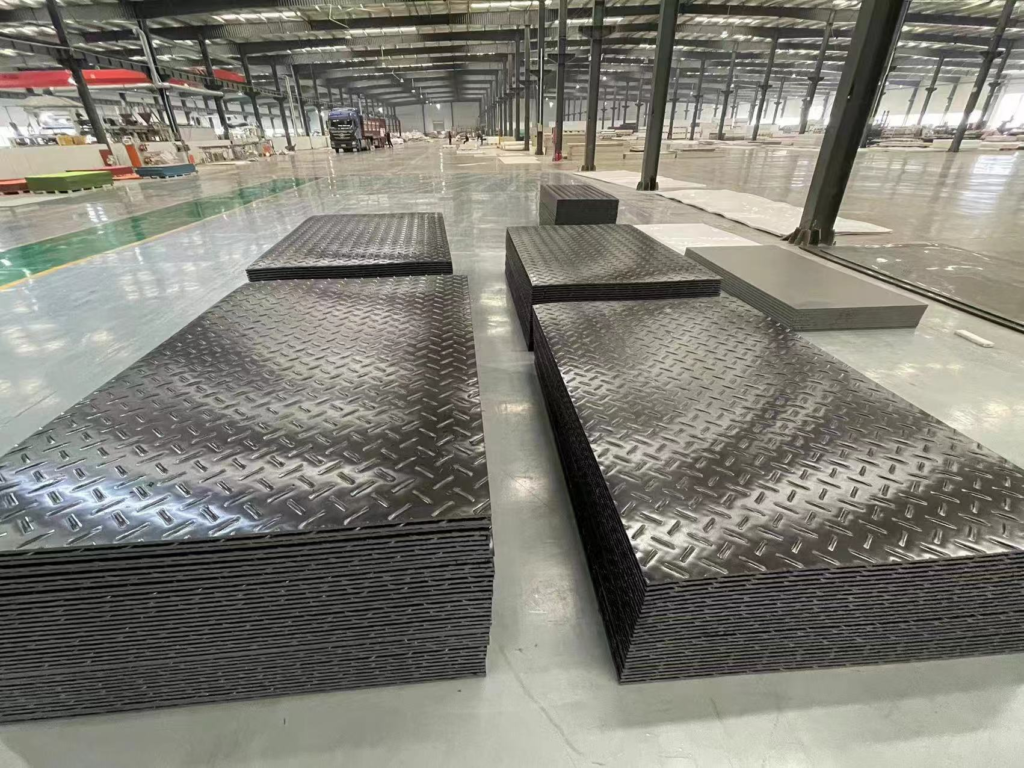In oilfield construction projects, ground stability and access are critical for operational success and worker safety. Road mats play a vital role in creating safe, durable temporary roads and work surfaces, enabling construction activities to proceed smoothly even in challenging terrains.

👉 Looking for high-performance mats? Explore our HDPE Anti-Slip Road Paving Panels designed for tough oilfield conditions.
1. Select the Right Material for Oilfield Conditions
Road mats used in oilfield construction are typically made from high-strength materials such as High-Density Polyethylene (HDPE), Ultra-High Molecular Weight Polyethylene (UHMWPE), or glass fiber-reinforced composites. These materials offer excellent resistance to corrosion, abrasion, impact, UV radiation, and harsh weather conditions—essential for the demanding oilfield environment. Their textured anti-slip surface reduces the risk of accidents in wet, muddy, or icy conditions.
💡 We recommend our HDPE Anti-Slip Road Panels for high durability, safety, and environmental performance.
2. Choose the Appropriate Size and Thickness
The size and thickness of the mats should match the application scenario. Thicker, heavy-duty mats (often 40mm–100mm) are ideal for soft, muddy, or uneven ground, where high load-bearing capacity is required for heavy-duty equipment such as drilling rigs or trucks. For quicker deployments or pedestrian pathways, lighter and thinner mats can be used to increase installation efficiency.
3. Load-Bearing Capacity is Critical
Oilfield sites often host large equipment, heavy vehicles, and extreme traffic loads. When selecting mats, ensure their load-bearing performance matches real-world operational demands, including the possibility of overloading, continuous movement, or severe weather. Many manufacturers provide load test data (e.g., static and dynamic load ratings), which should guide product selection.
4. Efficient Connection System Matters
To ensure surface continuity and stability, road mats often feature built-in interlocking systems, metal connectors, or bolted fasteners. These systems should allow for fast installation, secure connection, and easy removal, even under dirty or rugged site conditions.
5. Environmental Considerations and Reusability
High-quality composite mats are reusable over multiple projects and recyclable at end-of-life. Their use minimizes soil compaction and land disturbance compared to traditional methods like gravel or timber planks. Choosing mats with a long service life helps reduce waste and improve project sustainability metrics—an important consideration in ESG-conscious operations.
6. Handling and Storage Efficiency
Given the often remote and logistically complex nature of oilfield sites, mats should be easy to transport, deploy, and store. Many road mats are designed with forklift slots or lifting holes to assist manual or mechanical handling. When not in use, they can be stacked in compact formations, reducing storage footprint.
7. Wide Range of Applications
In oilfield operations, road mats are not limited to access roads—they are widely used for:
- Drilling rig platforms
- Tank storage pads
- Temporary helipads
- Maintenance areas
- Emergency access routes
Their modular design allows them to be adapted quickly to evolving project needs, improving both cost-efficiency and on-site safety.
🔗 Learn More or Request a Quote
Interested in solutions for your next oilfield project? Click here to learn more about our HDPE Anti-Slip Road Paving Panels, or contact us for a custom quote.

